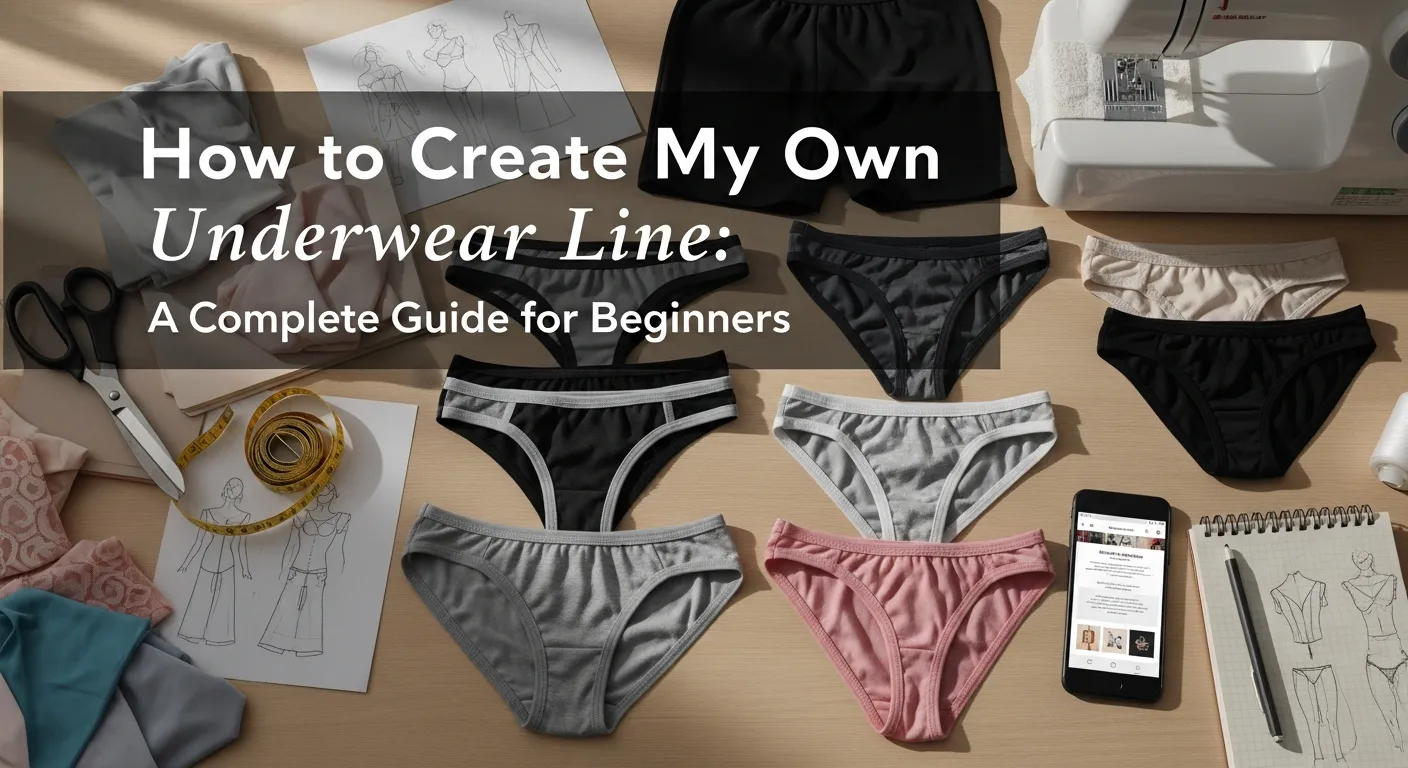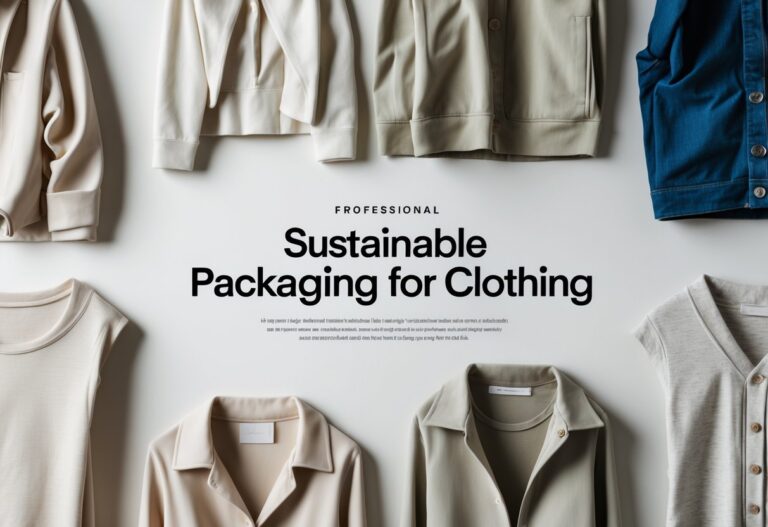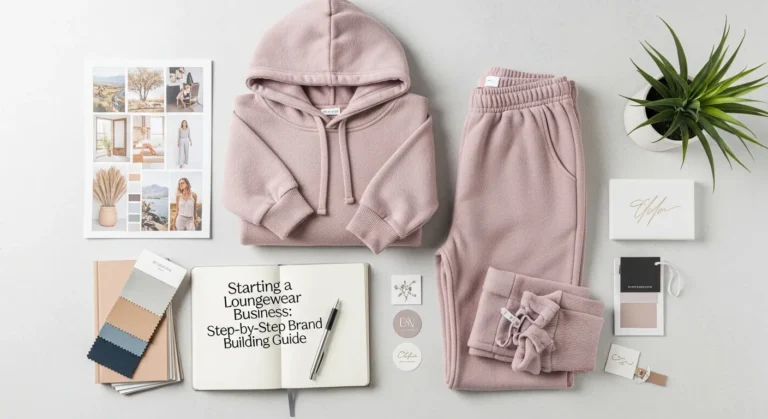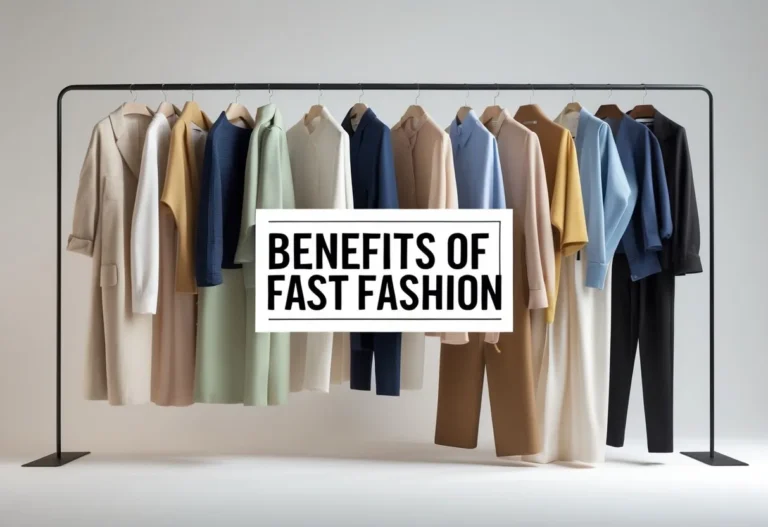How to Create My Own Underwear Line: Beginner’s Guide
So, you want to know how to create my own underwear line? Honestly, it’s a smart move—underwear is one of those markets that keeps growing, and people are getting pickier about what they wear underneath. These days, folks care about comfort, style, and even how eco-friendly their underwear is.
Starting an underwear brand means you’ve got to really understand the market, find your own little corner, and make something that stands out for quality and design. If you get it right, you might just build a loyal following by solving problems nobody else is tackling.

Before you get too excited, you’ve got to dig into what’s missing out there. Maybe it’s eco-friendly fabrics, better sizing, or something that handles sweat like a champ. Having a clear vision makes every other decision easier, from design to picking a manufacturer who gets your vibe.
And let’s be real—budgeting, and figuring out where and how you’ll sell, all shape how your brand grows. There’s a lot to juggle, but it’s not impossible if you break it down step by step.
Key Takeaways
- A clear market focus is essential to create underwear that meets customer needs.
- Partnering with experienced manufacturers improves product quality and scalability.
- Smart planning of costs and sales channels helps a brand grow steadily.
Understanding and Researching the Underwear Market

Researching the underwear market isn’t just about looking at what’s on store shelves. You’ve got to know who’s buying, what styles are hot, and where the big gaps are. If you’re not sure who you’re designing for, you’re basically guessing.
That early research guides everything: your designs, where you’ll make them, and how you’ll talk about them. It’s worth taking your time here.
Identifying Your Niche and Target Audience
Picking a niche makes your life easier—otherwise, you’ll drown in options. Some brands go after plus-size underwear, others are all about men’s performance, or they chase eco-conscious shoppers. The key is figuring out who your people are and what they care about.
Don’t just look at age or gender—think about values too. Do they want sustainable fabrics? Are they after technical features? Understand what makes them tick, and you’ll know what features to highlight.
For example, plus-size shoppers often want something that fits well and actually looks good. Athletes? They want breathability and support. Those little details end up shaping your whole product.
Analyzing Current Trends and Competitors
The underwear world moves fast. Lately, sustainable and eco-friendly fabrics are everywhere, and people actually read labels to see where things come from. Transparency is a big deal.
Don’t ignore your competitors. Study what the big names are doing—and where they’re falling short. Look at their pricing, what styles they push, and how they sell. If you can spot a gap, you’ve found your opportunity.
Exploring Sub-Niches and Unique Opportunities
There’s more out there than just basic briefs or boxers. Think about post-mastectomy underwear, seamless options for workouts, or even techy pairs with hidden pockets or special fabrics. It’s wild what you can come up with.
Most of these ideas come from listening to real people and what bugs them about their current options. If you can solve a problem nobody else has, you’re already ahead.
Designing Your Underwear Line

Designing your line is where things get real. You’ll make choices about styles, fabrics, and all the little technical bits that nobody sees but everyone feels. If you cut corners here, people notice—trust me.
Choosing Underwear Styles and Fits
First, decide which types you actually want to make. Briefs, boxers, trunks, jockstraps, panties, boyshorts—the list goes on. Each one fits differently and attracts a different crowd.
Zeroing in on your niche helps narrow it down. Maybe you want to go green with sustainable undies, or you want to offer personalized pairs for gifts. Whatever it is, stick with what fits your brand.
Fit is everything. If it’s uncomfortable, forget it. Try to balance style and practicality, and keep an eye on what your competitors are offering so you’re not just copying them.
Selecting High-Quality Fabrics and Materials
Fabric will make or break your underwear. Cotton, modal, bamboo, lace, and fancier blends for moisture control all have their place. Pick what works for your people—and your price point.
Sustainable fabrics are big right now, and they can help you stand out. If you want your undies to last, go for high-quality fibers and solid stitching. Nobody likes saggy elastic after two washes.
Think about seasonality too: lighter fabrics for summer or activewear, heavier ones for winter or something more luxe. Don’t be afraid to ask manufacturers for their input—they usually know what holds up.
Creating Tech Packs and Prototypes
You’ll need a tech pack—a detailed document that tells your manufacturer exactly what you want. It covers measurements, fabric, stitching, trims, colors, all the nitty-gritty. Get this wrong, and your samples won’t turn out right.
If you’re not a pro, hire a tech pack designer. It’ll save you headaches later. Good tech packs speed up the sampling process and cut down on mistakes.
When you get your first prototype, try everything out. Wear it, wash it, stretch it, and see how it holds up. You’ll almost always need a few rounds before it’s just right.
Branding and Building a Unique Brand Identity

Your brand identity is more than just a logo—it’s the vibe people get when they see your stuff. What do you stand for? How do you talk to your customers? Even your packaging matters here.
Defining Your Brand Vision and Values
Decide what you’re all about. Are you the comfy, sustainable brand? The inclusive one? The bold and cheeky one? Your vision should be clear, and your values should guide every choice you make.
If you’re pushing sustainability, show it in your materials and packaging. If you care about body positivity, offer more sizes and show real people in your marketing. A simple mission statement helps you stay on track.
Naming and Logo Creation
Pick a name that’s easy to remember and fits your vibe. Make sure it’s not already taken, both online and for trademarks. Nothing’s worse than falling in love with a name you can’t use.
Your logo should be clean and work everywhere—on your site, on tags, in ads. Stick to simple fonts and shapes. Color matters too: soft for cozy, bold for energetic. You’ll use this on everything from labels to packaging, so make it count.
Designing Brand Elements and Packaging
Consistency is key. Use the same fonts, colors, and graphics everywhere. It helps people recognize you, even if they just see a glimpse on Instagram.
Packaging isn’t just for protection—it’s a chance to wow your customer. Recycled materials or minimalist designs can say a lot about your values, and they don’t have to cost a fortune.
Don’t forget the little things like care labels or tags. They make your product feel professional and can reinforce your brand message. A good unboxing experience is worth the extra thought.
Finding and Collaborating With Manufacturers

Finding the right manufacturer can be a headache, but it’s crucial. You want someone who gets underwear, not just generic clothes. Look for partners who actually specialize in intimate apparel and are open about their order policies.
Sourcing Underwear Manufacturers
Start by researching companies that focus on underwear. They’ll know the fabrics and construction tricks you need. There are platforms that connect you with manufacturers worldwide—handy if you’re just starting out and want options.
Check reviews, ask for samples, and see what other brands they’ve worked with. Local might mean better communication, but overseas can save you money. The main thing is finding a partner who can deliver comfort and fit at scale.
Understanding Minimum Order Quantities and B2B Production
Most manufacturers have minimum order quantities (MOQs), often starting at 100 pieces per style. If you’re tight on cash or just want to test the waters, look for someone who’ll do smaller runs or samples first.
B2B production is all about negotiating: how many you’ll order, how long it’ll take, and what it’ll cost. Larger orders bring the price down, but you don’t want to be stuck with boxes of unsold undies. Think about demand before you commit.
Sampling, Prototyping, and Quality Control
Before you go big, get samples. Try them out—really. Wear them, wash them, stretch them. Make sure the seams don’t rub and the sizing isn’t weird. If something feels off, fix it now.
Good manufacturers will help you through a few rounds of samples. They should have quality control checks, and you can ask for reports or photos before signing off. This stage is your last chance to catch problems before you spend real money.
Financial Planning and Cost Management

Money’s always tight when you’re starting out, so financial planning for your underwear business is non-negotiable. You’ve got to map out every expense, keep production costs under control, and set prices that aren’t just competitive but actually keep you afloat. Otherwise, it’s way too easy to run out of cash before you even launch.
Creating Your Business Plan and Budget
Your business plan should spell out your goals, how big you want to get, and what it’ll take to get there. Factor in design costs, samples, manufacturing minimums, packaging, marketing, and shipping—don’t leave anything out.
Always budget a little extra—15-20% as a cushion for surprises is a good rule of thumb. Pay for things in phases: design and prototyping first, then manufacturing and marketing as you go. It’s tempting to go all in, but pacing yourself keeps you from burning through your budget too soon.
Costing Materials, Manufacturing, and Labeling
If you’re wondering what really drives costs in an underwear business, it all starts with material choices. Whether you go for cotton, modal, or those sustainable fibers everyone keeps talking about, your fabric will set the tone for your expenses—and maybe even your target customer.
High-quality or eco-friendly fabrics bump up costs, sure, but they can also draw in specific shoppers who care about that stuff. Manufacturing is another beast: labor, minimum order quantities (MOQs), trims, packaging, and labeling all add up fast.
MOQs are a big deal. Lower minimums mean less risk, but you’ll usually pay more per piece.
Labeling and packaging? They’re not just afterthoughts—they shape your brand identity and the customer’s first impression. All these costs need to be tracked closely if you want to figure out your break-even point or even guess at your profit potential.
Setting Retail Prices and Managing Margins
Retail pricing isn’t just about slapping a number on your product. You’ve got to make sure it covers every last expense—production, operations, the whole thing—and still leaves you with something to show for it.
There’s a balancing act here: market rates, what your audience will actually pay, and the margins you’re aiming for. Most underwear brands seem to shoot for margins between 50% and 70%, though where you land depends a lot on your brand’s vibe.
Luxury lines? They’ll usually go higher. Entry-level brands might cut it closer to stay competitive.
It’s worth checking your costs and sales data often. That way, you can tweak prices when the market shifts or your own expenses change.
Launching, Selling, and Growing Your Brand

Success in the underwear business? It really comes down to picking the right sales channels, nailing your marketing, and planning for what’s next. Launching with intention helps you build a base, and smart promotion gets you seen.
Growth is all about making the right calls as you scale—don’t rush it, but don’t get stuck either.
Setting up Online Sales Channels
Where you sell your underwear matters—a lot. Most brands kick things off with their own eCommerce store, using Shopify or WooCommerce for that full control over branding and customer experience.
But if you want to reach more people right out of the gate, marketplaces like Etsy and Amazon are hard to ignore. They’ve got built-in audiences, though you’ll pay for the privilege and lose a bit of control.
Direct-to-consumer (D2C) sites are great for margins and building relationships. Just make sure your site actually works—smooth payments, mobile-friendly, easy to navigate.
Inventory tools that sync with your store make it way easier to keep tabs on stock and orders.
If you’re new to all this, launching with a small, focused collection can really help. It keeps things simple and lets you see what customers actually want before you go all-in.
Marketing and Promoting Your Underwear Line
Marketing is the engine behind brand buzz and sales. Visual platforms like Instagram and TikTok are perfect for showing off your designs and reaching the right crowd.
Working with influencers or getting genuine customer reviews can boost your credibility in a way that paid ads just can’t.
Email marketing is still alive and well—use it to keep your customers in the loop about launches or deals. Paid ads on Facebook or Google? They work, but only if you’re targeting the right folks.
Branding needs to highlight what makes you different—comfort, eco-friendliness, inclusive sizing, whatever your angle is. Keep your visuals, packaging, and messaging consistent so people start to recognize you.
And hey, don’t sleep on offline marketing. Pop-up shops or teaming up with local boutiques can get new eyes on your brand and help you build a local following.
Planning for Scale and Future Growth
Scaling up isn’t just about making more stuff. You’ve got to think about production partners, logistics, and where you’ll sell next.
When orders pick up, it’s time to work with manufacturers who can handle bigger runs but still deliver quality. Expanding your product range is tempting, but it’s best to do it slowly and see what actually sells.
Warehousing and fulfillment services can help you ship faster and avoid running out of stock. Some suppliers even offer drop-shipping, which is a lifesaver for startups who can’t risk holding tons of inventory.
Trying new markets or platforms like Amazon can bring in extra revenue, but you’ve got to keep your quality and messaging tight across every channel. Reputation is everything, right?
Frequently Asked Questions
What are the initial steps to take when starting an underwear business?
First, dive into the market and figure out your niche. Who are your customers—age, gender, lifestyle? Where are the gaps?
What should I include in my underwear business plan?
Your business plan needs a solid market analysis, a clear picture of your target customers, and a detailed product description.
What is the average profit margin for an underwear business?
Margins can be all over the place, but most land between 40% and 60%. It depends on your costs, pricing, and how you position your brand.
How do I calculate the cost of establishing a new underwear line?
Remember to include packaging, branding, shipping, and taxes. Realistically, you’re looking at an initial investment somewhere between $3,000 and $15,000.
Can you provide tips on creating a successful brand for a men’s underwear line?
Keep your branding consistent—logos, packaging, messaging, all of it. Invest in great photography and a solid online presence to build trust with your audience.
What are the challenges involved in becoming an underwear model, and how can I overcome them?
So, you want to know what it really takes to break into the world of underwear modeling? The main challenge is honestly just keeping up with the physical fitness demands—and, of course, those industry standards for looks can be pretty relentless.






